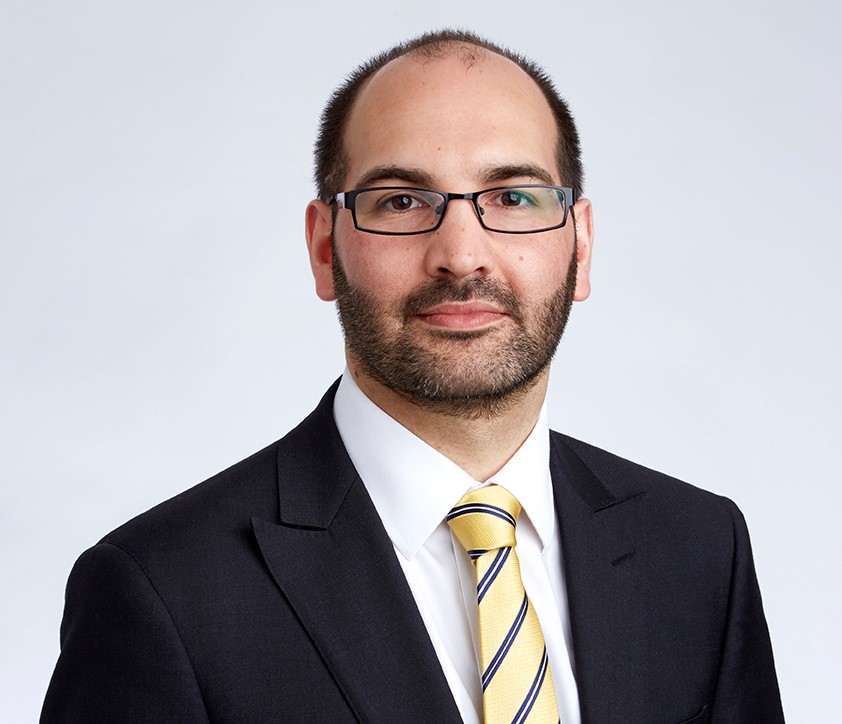ETF Stream’s senior writer Tom Eckett speaks to Tilney’s head of multi-asset Ben Seager-Scott on smart beta, the different ways he implements factors and his concerns around the rise of thematic investing.
Seager-Scott joined Tilney in 2011 as a senior research analyst when it was Bestinvest before being promoted to chief investment strategist and subsequently multi-asset head, where he manages £7bn assets.
Tom Eckett: Do you use smart beta or factor products within your clients’ portfolios?
Ben Seager-Scott: I’ll start, as always, by stating that I dislike the term ‘smart beta’ as it implies these strategies are somehow superior whereas I view such methodologies as simply different with their own sets of pros and cons, and different environments that favour or disfavour them. Though I do accept we seem to have lost the argument over nomenclature, so I’ll use the term under protest!
In answer to the original question, we use a number of passive instruments in client portfolios depending on the particular mandate, which includes smart beta products where appropriate. They often provide a cost-effective way of implementing elements of an investment strategy that are more nuanced than simply seeking exposure to broad market beta.
How much of your portfolios does smart beta typically make up?
It varies, particularly for our passive-focused portfolios where they can make up quite a significant level of exposure depending on your definition. However, for a typical client portfolio, it is usually more limited – I’d say less than 10% in smart beta for a typical client portfolio.
How do you view smart beta/factor-based ETFs?
For me, they are primarily tools in the toolkit for implementing an investment strategy. Often simple market exposure is best served by a plain vanilla tracker/ETF but there can be also be particular views that I want to express more precisely.
Sometimes this can be on a medium-term view to fine-tune part of the investment strategy, but it can also be a position looking to harness a longer-term and persistent factor-based risk premium.
While I don’t tend to think of smart beta ETFs as substitutes for active funds, they can nonetheless be informative to identify active managers who are, in fact, closet factor-huggers, but that’s a different discussion.
Which parts of the smart beta/factor-based spectrum (including thematic ETFs) interest you most at the moment?
Call me old fashioned, but for me the most compelling factors are the simple, thoroughly-established and robust factors identified by Fama and French in the 1990s. If I had to pick one, I’d go with the value factor, which I think is growing more interesting the more out in the cold it appears.
I’m less interested in some of the more recent, complex, multi-factor products which to me simply lack the robust grounding and long-term evidence that I need to have confidence in such a strategy.
When you focus on a particular smart beta product to invest in what factors do you take into account?
This could easily be an essay question so I will try to keep it brief! Fund structure is, of course important – including whether it is physical or synthetic, any securities lending, domicile, reporting status, an independent assessment of internal and external costs (not just OCF, but looking at rolling tracking difference where applicable and secondary market trading history). This is the same for a smart beta product as for a more traditional tracker.
Indexation methodology is also an important area to look at for most passives, but it is especially important for smart beta where you are typically looking for something more complex than broad market movement. It is important not only to understand the mechanics of the methodology, but also the consequences, including sector or country skews relative to the broad market, and how the methodology might behave in different market environments.
Alongside smart beta and factor-based investing, we have also seen the rise of thematic based investing using ETFs – does this interest you?
It’s certainly of interest, though I usually have significant reservations about thematic investing, as there is the risk that investors are drawn into an attractive narrative without giving due regard to the full investment case and fundamentals, particularly valuations – which can get stretched when a theme is a hot topic – and diversification.
Some of the newer thematic offerings that go into more granularity and explore a theme with a level of intellectual insight are certainly interesting, though, and will no doubt garner a lot of interest from investors. They probably have a place as a small part in appropriate mandates.
Are you concerned by the recurring accusations of hacking and data mining levelled at all factors and smart beta strategies?
It’s probably one of my chief concerns with smart beta strategies – unfortunately, many positive effects are purely historical statistical anomalies or are just simply variants or combinations of existing, established factors. I have a pretty high bar before I will give serious credence to new strategies – I generally favour the factors that Fama, French & Carhart established in the 1990s.
When considering factors and smart beta strategies, I focus on four key questions to frame my thinking:
• Is there established, peer-reviewed academic literature supporting the factor?
• Is there a clear rationale for why a factor premium exists (economic or behavioural)?
• Does the premium persist out of sample (ideally for a period of a decade or more)?
• Is there reason to believe that the factor premium will persist into the future?
If the answer is no to any of these, then it’s unlikely to pass muster for me.
How do you engage with clients about smart beta – is there any interest and if there is interest do clients raise any concerns?
It depends on the mandate – as a general rule, I will discuss with clients what is held in their portfolio and what the rationale is, be that active, simple passive or smart beta. Often this will be in the context of the broader investment strategy. Clients rarely raise concerns, but I think that is a function of trust in how we select funds and how we communicate our reasoning.
Are there any specific areas where you would like to see new products emerge?
Fixed income broadly is ripe for further development, particularly around credit and some sector exposures. It would be very interesting to start seeing some long-short equity products as well, though this is naturally a more challenging and complex area.
Does multifactor investing interest you?
Intellectually, yes – but I remain rather sceptical, as the literature and evidence are patchy at best; it tends to fall foul of my four key questions above. I believe there is a risk that some people see combining all the different factors as the holy grail of higher return with lower risk, which should always set off alarm bells.
As well as potential return enhancements, multifactor products also come with more complicated risk, and it is essential that investors understand what additional risks they are exposing themselves to that justifies the higher potential reward. I remain to be convinced.
By 2025 do you think you’ll be making extensive use of smart beta products and factor ETFs? What proportion of portfolios do you think they’ll comprise?
I can see a growing level of demand in the market for these products, and by 2025 I think there will have been time for other robust strategies to emerge that satisfy my four questions above.
Crucially, and a challenge for the industry, I hope we will see a culling of products whose reality does not end up meeting the initial hype, and this evolutionary cull will be needed for investors to have confidence in the remaining smart beta strategies that will have stood the test of time.
This article first appeared in the Q3 2019 edition of our new publication, Beyond Beta. To receive a full copy, click here.



